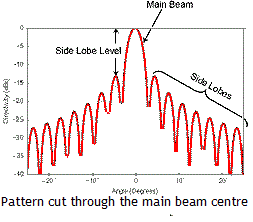| Home Login Register |
| Satellite Internet forum › iDirect Forum: hubs and terminals › CS C/N after ASI |
|
Pages: 1
|
CS C/N after ASI(Read 9442 times) |
|
VSATEngineer
Member
★★ Offline Posts: 24 |
Mar 23rd, 2015 at 7:27am
|
| Back to top |
IP Logged
|
|
Admin1
YaBB Admin
★★★★★ Offline Posts: 1215 |
Reply #1 - Mar 23rd, 2015 at 7:29pm
|
| Back to top |
IP Logged
|
|
Admin1
YaBB Admin
★★★★★ Offline Posts: 1215 |
Reply #2 - Mar 23rd, 2015 at 7:37pm
|
| Back to top |
IP Logged
|
|
Admin1
YaBB Admin
★★★★★ Offline Posts: 1215 |
Reply #3 - Mar 23rd, 2015 at 7:50pm
|
| Back to top |
IP Logged
|
|
VSATEngineer
Member
★★ Offline Posts: 24 |
Reply #4 - Mar 24th, 2015 at 8:37am
|
| Back to top |
IP Logged
|
|
VSATEngineer
Member
★★ Offline Posts: 24 |
Reply #5 - May 17th, 2015 at 9:38am
|
| Back to top |
IP Logged
|
|
Eric Johnston
Senior Member
★★★ Offline Posts: 2109 |
Reply #6 - May 17th, 2015 at 3:45pm
|
| Back to top |
IP Logged
|
|
VSATEngineer
Member
★★ Offline Posts: 24 |
Reply #7 - Jun 10th, 2015 at 9:54am
|
| Back to top |
IP Logged
|
|
Vietnam television
Member
★★ Offline Posts: 14 |
Reply #8 - Jun 11th, 2015 at 4:01am
|
| Back to top |
Transmission center, VTV
258 Bach Dang street, Hai chau distric, Da nang city, Vietnam Phone: 84 511 3565013 / +84 916 899 783 https://vn.linkedin.com/pub/le-trung/87/a45/489 SMS/Whatsapp/viber: +84 916 899 78 |
|
Admin1
YaBB Admin
★★★★★ Offline Posts: 1215 |
Reply #9 - Jun 11th, 2015 at 6:41am
|
| Back to top |
IP Logged
|
|
Vietnam television
Member
★★ Offline Posts: 14 |
Reply #10 - Jun 11th, 2015 at 11:32pm
|
| Back to top |
Transmission center, VTV
258 Bach Dang street, Hai chau distric, Da nang city, Vietnam Phone: 84 511 3565013 / +84 916 899 783 https://vn.linkedin.com/pub/le-trung/87/a45/489 SMS/Whatsapp/viber: +84 916 899 78 |
|
Eric Johnston
Senior Member
★★★ Offline Posts: 2109 |
Reply #11 - Jun 12th, 2015 at 1:23pm
|
| Back to top |
IP Logged
|
|
Vietnam television
Member
★★ Offline Posts: 14 |
Reply #12 - Jun 13th, 2015 at 12:00am
|
| Back to top |
Transmission center, VTV
258 Bach Dang street, Hai chau distric, Da nang city, Vietnam Phone: 84 511 3565013 / +84 916 899 783 https://vn.linkedin.com/pub/le-trung/87/a45/489 SMS/Whatsapp/viber: +84 916 899 78 |
|
Admin1
YaBB Admin
★★★★★ Offline Posts: 1215 |
Reply #13 - Jun 13th, 2015 at 10:26am
|
| Back to top |
IP Logged
|
|
Vietnam television
Member
★★ Offline Posts: 14 |
Reply #14 - Jun 13th, 2015 at 11:29am
|
| Back to top |
Transmission center, VTV
258 Bach Dang street, Hai chau distric, Da nang city, Vietnam Phone: 84 511 3565013 / +84 916 899 783 https://vn.linkedin.com/pub/le-trung/87/a45/489 SMS/Whatsapp/viber: +84 916 899 78 |
|
Vietnam television
Member
★★ Offline Posts: 14 |
Reply #15 - Jun 17th, 2015 at 4:15am
|
| Back to top |
Transmission center, VTV
258 Bach Dang street, Hai chau distric, Da nang city, Vietnam Phone: 84 511 3565013 / +84 916 899 783 https://vn.linkedin.com/pub/le-trung/87/a45/489 SMS/Whatsapp/viber: +84 916 899 78 |
|
Admin1
YaBB Admin
★★★★★ Offline Posts: 1215 |
Reply #16 - Jun 17th, 2015 at 11:00am
|
| Back to top |
IP Logged
|
|
Vietnam television
Member
★★ Offline Posts: 14 |
Reply #17 - Jun 17th, 2015 at 5:53pm
|
| Back to top |
Transmission center, VTV
258 Bach Dang street, Hai chau distric, Da nang city, Vietnam Phone: 84 511 3565013 / +84 916 899 783 https://vn.linkedin.com/pub/le-trung/87/a45/489 SMS/Whatsapp/viber: +84 916 899 78 |
|
Admin1
YaBB Admin
★★★★★ Offline Posts: 1215 |
Reply #18 - Jun 17th, 2015 at 9:04pm
|
| Back to top |
IP Logged
|
|
Vietnam television
Member
★★ Offline Posts: 14 |
Reply #19 - Jun 19th, 2015 at 9:50am
|
| Back to top |
Transmission center, VTV
258 Bach Dang street, Hai chau distric, Da nang city, Vietnam Phone: 84 511 3565013 / +84 916 899 783 https://vn.linkedin.com/pub/le-trung/87/a45/489 SMS/Whatsapp/viber: +84 916 899 78 |
|
Admin1
YaBB Admin
★★★★★ Offline Posts: 1215 |
Reply #20 - Jun 19th, 2015 at 1:21pm
|
| Back to top |
IP Logged
|
|
Vietnam television
Member
★★ Offline Posts: 14 |
Reply #21 - Jun 19th, 2015 at 2:19pm
|
| Back to top |
Transmission center, VTV
258 Bach Dang street, Hai chau distric, Da nang city, Vietnam Phone: 84 511 3565013 / +84 916 899 783 https://vn.linkedin.com/pub/le-trung/87/a45/489 SMS/Whatsapp/viber: +84 916 899 78 |
|
Admin1
YaBB Admin
★★★★★ Offline Posts: 1215 |
Reply #22 - Jun 19th, 2015 at 4:32pm
|
| Back to top |
IP Logged
|
|
Vietnam television
Member
★★ Offline Posts: 14 |
Reply #23 - Jun 22nd, 2015 at 9:16am
|
| Back to top |
Transmission center, VTV
258 Bach Dang street, Hai chau distric, Da nang city, Vietnam Phone: 84 511 3565013 / +84 916 899 783 https://vn.linkedin.com/pub/le-trung/87/a45/489 SMS/Whatsapp/viber: +84 916 899 78 |
|
Pages: 1
|
Email me: eric@satsig.net
Powered by YaBB 2.5.2!
YaBB Forum Software © 2000-. All Rights Reserved.
Disclaimer, Terms of Use and Privacy Forum User Agreement Forum rules Cookie policy.



